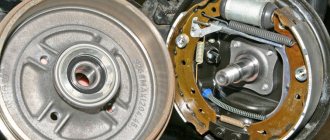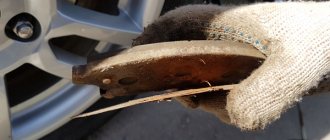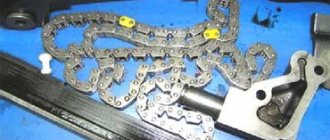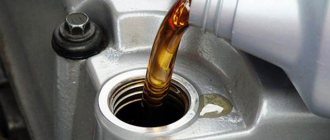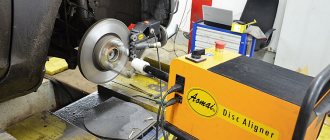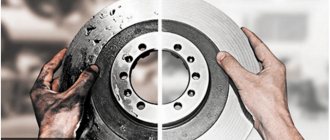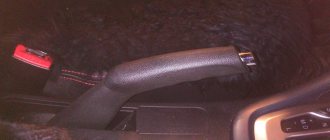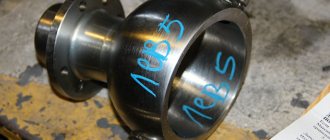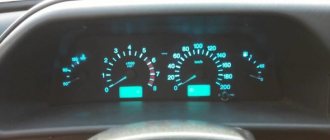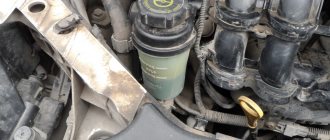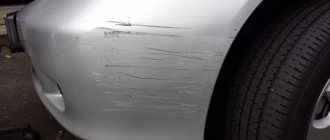When do you need to change brake pads?
The brake system is an essential component, the correct functioning of which determines not only the performance properties of the vehicle, but also road safety in general. The procedure for diagnosing and servicing the brake system includes a number of mandatory operations, among which timely replacement of brake pads is mandatory. But how do you know when to change your brake pads?
The best brake pad manufacturers
PartReview has collected enough reviews of various brands for this spare part so that a rating can be formed. TOP brake pad manufacturers:
- Akebono - 84% positive votes. Ratio: +275 votes
- ATE - 80% positive votes. Ratio: +625 votes
- Ferodo - 74% positive votes. Ratio: +326 votes
- Remsa - 72% positive votes. Ratio: +324 votes
- Nisshinbo - 72% positive votes. Ratio: +191 votes
What affects the amount of wear?
There are many external factors that influence this indicator and lead to more frequent replacement of brake pads:
- Driving style. When driving aggressively with sudden acceleration and deceleration, the braking system experiences constant significant loads.
- Driving mode. If the car is operated in an urban environment or in mountainous areas, then while driving it is required to brake more often. The service life of the pads is reduced, even if the driver does it carefully.
- Loading the car. When the trunk is loaded, the load on the rear axle increases due to the redistribution of the vehicle's weight. Accordingly, the degree of wear of the rear brake pads in this case will be higher than the front ones.
- Gearbox type. All other things being equal, on a car with an automatic transmission, the linings will wear out faster as the brake pedal is used more often. However, this factor can be considered as an addition to the driving style and mode already mentioned.
- Malfunctions of the brake system. Jamming of the working brake cylinder, souring of the caliper guides, damage to the brake disc lead to uneven wear of the brake pads, which will require their premature replacement.
- Quality of friction lining material. Low-quality linings are made of short-lived materials, have a reduced service life and can leave various waste and deposits that impair the performance of the brakes.
When braking, the weight of the car moves forward, the front brake mechanisms are generally loaded much more heavily, so the front pads need to be replaced more often than the rear ones.
Disc brakes
Disc brakes on a bicycle are a brake disc or also called a rotor, which is attached to the hub of the bicycle wheel and the caliper (machine) in which the brake pads are located. When you press the brake handle, the braking force is transmitted through the cable to the pads, which are pressed against the rotor and friction occurs directly and, as a result, braking occurs.
Disc brake pads of different types.
Disc brake pads are used for disc brakes. There are different types and types, for example:
They are organic and metallized. Organic disc pads are soft, due to which they have a short lifespan and wear out quickly, but provide good brake grip. And metallic disc brakes are harder because they are made of metal filling and are more wear-resistant and provide excellent braking on descents.
Disc brake pads are selected for a bicycle based on the type of disc brakes (for each brake model there are corresponding pads). You can determine which block you need by its appearance and shape.
Installing and adjusting disc pads
Sequence of actions for installing and adjusting disc brakes:
- Attach the brake levers to the steering wheel and adjust the position of the handles using a hexagon;
- Install the caliper (machine) on the frame in special disk mounts;
- Install the brake discs (rotor) onto the hub using bolts (6 pcs.), which are included in the kit;
- Attach the cable to the brake lever, insert them into the jacket and, using the guides on the frame, guide the jacket to the caliper;
- Attach the cable to the caliper. Now the most important point is that before installing new disc pads, make sure your hands are clean, otherwise you may ruin the new pads. Brake pads for disc brakes are equipped with a spring mechanism that is released when braking.
- We insert the brake pads into the caliper, clamp them with a cotter pin (we bend the ends to fix the pads). Then we adjust the position of the brake pads until the pads touch the rotor. The gap between the rotor and the disk should not exceed 1 mm.
After all adjustments and settings, do not forget to check the quality of braking and the tightness of all fixing bolts.
- It will be useful for you to know why the brakes on a bicycle squeak.
- Prices for popular models of disc brakes: www.velosipedinfo.ru/diskovyie-tormoza
Watch another video about setting up and adjusting v-brake brakes from the guys from Veloshostka. For a clearer understanding
At what wear do brake pads need to be replaced?
In each vehicle operating manual, the manufacturer indicates the period for replacing the brake pads; this is calculated by specialists from the company that manufactured the vehicle; usually this is 20-30 thousand km.
However, designers and engineers cannot take into account all the operating factors of a particular car: the region in which it will be driven, the driver’s driving style, and more. The easiest and most accurate way to determine pad wear is a visual inspection.
If the car has covered the number of kilometers recommended by the manufacturer, or is approaching it, it is worth checking the condition of the friction linings. If their thickness is less than 1.5-2 mm (more precisely indicated in the manual of a particular car), the brake pads are worn out.
Some car models have special windows through which it is convenient to visually determine the thickness of the friction linings.
Types of car brake pads
The automotive spare parts market offers car owners four types of brake pads:
- Semi-metallic - the share of metal in such pads reaches 65%. The metal powder is mixed with certain additives and inorganic fillers to improve braking performance and pad wear resistance. The most affordable and quite effective, although a little noisy.
- Organic (NAO) – soft, less noisy. Pads wear out quickly and therefore require frequent replacement. Made from Kevlar, glass, rubber and special resins.
- Low metal. They are made using the same technology as the previous ones, but with the addition of metal chips (copper or steel), which improves the braking performance of the pads, but makes them noisier and dustier.
- Ceramic - the most prestigious and effective. Made from a specially developed composite material similar to ceramics, they are lightweight and quiet, and almost do not wear out the brake disc. They have one drawback - their high price; they are used mainly on prestigious models and in sports.
Video: Which brake pads are better to put on AUTO
When choosing new brake pads, try to adhere to the following rules:
- the packaging must be of high quality, and the markings must correspond to the model and make of your car. Analogs can only be purchased after careful checking;
- the friction material, upon close examination, should be of the same color and composition;
- the surface of the friction material must be smooth and without cracks;
- It’s better to buy an original product; licensed ones are often counterfeited.
Popular brake pad manufacturers
The most popular brake pad manufacturers on PartReview are represented by the following companies:
- TRW - 431 reviews. PR score: 63, average score: 3.5.
- ATE - 314 reviews. PR score: 80, average score: 4.0.
- NiBK - 235 reviews. PR score: 69, average score: 3.6.
- Remsa - 218 reviews. PR score: 72, average score: 3.7.
- Ferodo — 210 reviews. PR score: 74, average score: 3.8.
Most opinions about the operation and characteristics of brake pads are collected on these pages.
Replacement frequency
The need to replace the Ford Focus 2 brake discs again depends on the thickness of the metal on them. For the front, the indications for replacement are as follows:
- thickness of new disks – 25 mm;
- the manufacturer recommends replacing the part when the thickness is 23 mm;
- According to the experience of car owners, it is generally accepted to change when the thickness is 20–21 mm.
Replacement of rear brake discs on a Ford Focus 2 is carried out with the following indicators:
- thickness of new ones – 11 mm;
- the manufacturer recommends replacing the part when the thickness is 9 mm;
- According to the experience of car owners, it is generally accepted to change when the thickness is 7–8 mm.
As the practice of auto mechanics and car owners shows, brake discs last approximately 2-3 sets of pads.
Untimely replacement of discs leads to deterioration of brake performance, which is very dangerous. Also, the need for replacement may manifest itself in the beating of the steering wheel when braking and the appearance of extraneous sounds when the brake mechanism is operating.
As a rule, when such symptoms appear, even a visual inspection of the disks on a Ford Focus 2 is enough to determine whether replacement is needed. This is evidenced by grooves, cracks and potholes on the part.
Any car service center or service station will help you replace brake discs on the front and rear wheels. The procedure does not take much time, however, you will have to fork out for the services of a specialist. If you have a desire to save money and the ability to hold a wrench in your hands, then the replacement can be done in a garage yourself.
V-brakes
V-brake type brakes - consist of two levers, which, when you press the brake lever, are brought to the rim using cable tension and braking occurs due to the friction of the pads on the surface of the rim. Typically, this type of brake is installed on entry-level and mid-level bicycles.
There are two types of V-brake brake pads:
- Disposable brake pads for v-brake brakes.
Disposable - consist of a bolt with special spacer washers, a metal plate, which are soldered into a rubber component. They tend to wear out quickly and are cheap. - V-brake cartridge pads.
Cartridge - consists of a bolt with special spacer washers, a metal plate and cartridge pads (rubber pads), which are removed and attached to the plate using a cotter pin - a special pin, removed with ordinary pliers (indicated by red arrows in the picture). We recommend using three-color pads , as they are made from different materials, which allows you to achieve maximum efficiency. They are also more wear-resistant due to the fact that they have a larger working thickness and are more expensive than conventional disposable ones.
Cartridge pads and cotter pins are often sold as a set. These pads are more expensive and work better in wet weather. Cartridge pads are dismountable, which makes it possible to change only the rubber component. Brake pads are available for both dry and wet weather and universal (all-season).
Red arrows indicate cotter pins for removal.
Remember that a worn-out pad wears out the braking surface of the rim and significantly damages the rim .
The service life of any pad can be called short, therefore it is a consumable, and to a large extent the service life depends on the riding style and weather conditions. To determine the degree of wear of the pad, clear grooves are visible on it. If these grooves are not visible, then the pad requires replacement. It should be noted that any pads, both cartridge and disposable, are suitable for V-brake.
- Be sure to find out more about which bike brakes are best in order to make the right choice.
- Which brakes to choose: disc or rim //velosipedinfo.ru/kakie-tormoza-dlya-velosipeda-luchshe-diskovyie-ili-obodnyie
